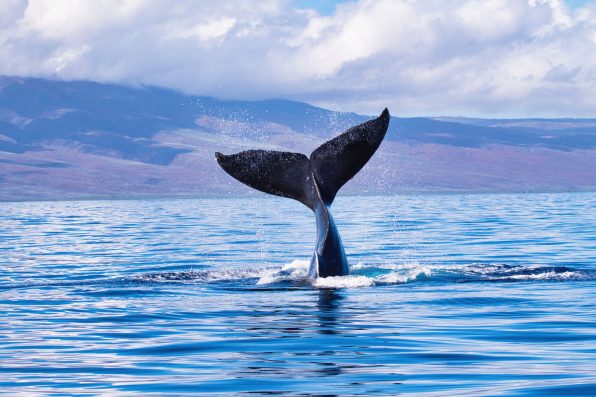In A New Genome Sequencing Study, Scientists Discovered That Blue Whales In The Atlantic Ocean Are Mating With Other Species

Through genome sequencing, scientists have discovered that blue whales in the Atlantic Ocean have been mating with other species.
The study revealed that there was a high percentage of DNA from fin whales in the blue whales that were tested.
Blue whales are the largest animals alive on Earth. The magnificent marine mammals are capable of reaching lengths of 110 feet and can weigh over 200 tons. According to National Geographic, just their tongues can weigh as much as an elephant.
In the early 20th century, the number of blue whales started to experience a sharp decrease due to commercial whaling. They are currently listed as an endangered species by the International Union for Conservation of Nature (IUCN).
There are four subspecies of blue whale. B. musculus musculus, the one that inhabits the waters of the North Atlantic and North Pacific, is the most threatened. I
n a new study published in the journal Conservation Genetics, researchers examined the genomes of B. musculus musculus in the North Atlantic to check for signs of inbreeding.
Inbreeding causes poorer reproductive efficiency, which will prevent this group of blue whales from recovering their population, so researchers wanted to ensure that the phenomenon was not happening.
What they found instead was even more surprising. Each of the sampled whales had around 3.5 percent of fin whale DNA in their genomes, creating hybrid whales with the coloration of fin whales and the jaw structure of blue whales. The percentage of fin whale DNA was higher than the researchers had expected to see.
Additionally, they realized that the hybrids may have been successfully reproducing with blue whales, resulting in offspring with DNA mostly from blue whales.

manuel – stock.adobe.com – illustrative purposes only, not the actual whale
Previously, the hybrids were assumed to be infertile, much like other hybrid animals, such as the mule, a donkey and horse hybrid, or the liger, a lion and tiger hybrid.
However, scientists now know that is not the case, and at least some of the hybrid whales are capable of producing offspring of their own.
The type of DNA transfer the whales have been engaging in is called introgression. Introgression involves the transfer of genetic material from one species to another following hybridization and repeated backcrossing.
It seems that only blue whales are able, or willing, to mate with the hybrids. Studies on fin whales have not uncovered any evidence of the species inheriting blue whale DNA through introgression.
Also, as far as scientists know, introgression between blue whales and fin whales happens only in the North Atlantic. There are few indications that the event is occurring anywhere else in the world.
Concerns have arisen over the continuation of introgression. Some scientists believe it could reduce the amount of blue whale DNA that is present across the population, making the whales less resilient to environmental changes. But so far, there’s been no sign that fin whale DNA in blue whales is impacting them negatively.
Sign up for Chip Chick’s newsletter and get stories like this delivered to your inbox.
More About:Animals





